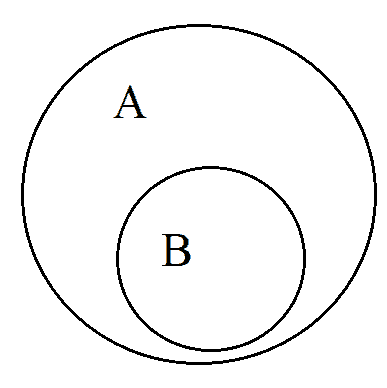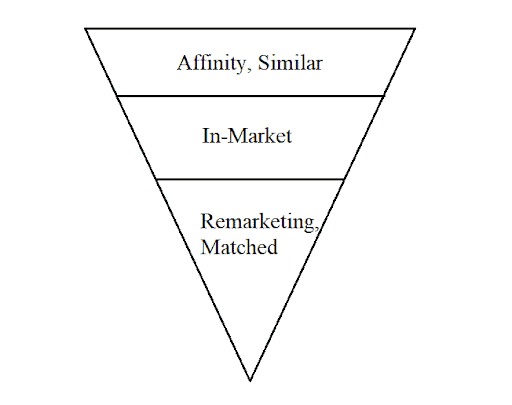When we think about adding audiences to campaigns on Google, what usually comes to mind is the Google Display Network (GDN), and image ads. Typically, advertisers use a two-pronged approach to Google Ads which covers advertising on the google.com page itself (Paid Search), and ads off of google.com, meaning other pages that exist on the internet (the GDN). Since there are 4.2 billion web pages on the internet (not all of them are active), there are ways for advertisers to find the right people visiting the right pages at the right time.

What Are Audiences?
One of the interesting concepts to consider about advertising on pages that are not google.com is how Google can possibly know to serve someone one image ad over another when visiting a website. The answer is that we know that Google collects our information, and therefore they can safely guess which ads are most likely to appeal to us and get us to click.
Audiences are made up of segments, or groups of people with specific interests, intents, and demographic information, as estimated by Google. Google groups people together based on information that they have in common, and gives advertisers a buffet to choose from based on those characteristics. This is useful to advertisers because they don’t waste ad spend or energy on irrelevant targets, and also because when they can zero in on their niches, they are able to adapt their messaging, offers and budget to segments as specific as they want to make them.
Can this style of data collection be harnessed for google.com searches? Why would we even want to do that?
Yes! When a person is searching one of your keywords on google.com, they are more in the mindset for completing your funnel than they are if they are on any random page on the internet. For example, if you sell security cameras, and your potential buyer is browsing for baby clothing on an e-commerce site, they might be relevant but they are not currently in the mindset because they are in baby clothes shopping mode. However, if this same person finishes what they were doing on the e-commerce site and then starts Googling for security cameras, you and Google both are able to identify them as someone who is relevant to you – they are definitely interested in what you are selling.
Breaking Down Keyword Searches By Audience
Sophisticated Paid Search marketers know that not everyone who searches for a general sounding keyword is going to be relevant to your business, and therefore they will want to winnow the wheat from the chaff. For example, you might be a company that makes satellites and rents capacity on the satellite to companies who need to broadcast. However, if you bid on “satellite services”, you might be capturing people who want to sign up for satellite TV services to watch TV at home! That would be a total waste of ad spend for your business.
Layering audiences onto keywords is most valuable for high volume keywords. Niche keywords, which usually have low volume, typically shouldn’t be layered with audiences because limiting niche keyword impressions means reducing how many clicks you will get too drastically. Use this strategy for high volume, short tail keywords.
Here is an illustrated example of what layering means:

If A represents all of the searches for your keyword or set of keywords, B represents the people who are more relevant to your business. You can capture B and not bother targeting A if you can layer an audience onto your search campaign.
What Kinds Of Audiences Can We Layer?
Google groups the audiences into 5 main categories.
- Affinity – groups of users gathered based on their interests
- In-market – are users who are actively researching or comparing products or services across the GDN
- Remarketing – users who already completed an action on your website
- Matched Audiences – retargeting users based on their email address
- Similar Audiences – users who are similar to the users who fulfilled an action on your site
These audiences fall into different places on the typical marketing funnel, as illustrated here:

Depending on the goals of your marketing strategy and your campaign, you will want to choose different audiences to layer.
A famous example of a use case here is called RLSA (Remarketing Lists for Search Ads). This is not Remarketing by serving image ads to your website visitors to remind them to come back. RLSA campaigns serve ads on google.com to people who have visited your site once and find themselves still Googling. Maybe they are in the research phase, maybe they are looking into your competitors – there could be many reasons why they are still searching your related keywords. This is an opportunity to target them with a specific second message. For example, if you sell a cybersecurity software, you might choose a specific first ad that they see and then a different second ad which reflects that they are already familiar with you and might want to choose your software
Let’s look at a real-world example. Here are two campaigns containing the exact same keywords, where the only difference is that the second one has an In-Market Audience layered on it. Otherwise, the keywords, bids, bid strategy, ads and landing pages are exactly the same.

Of course it delivered fewer impressions because as you will remember from the first illustration, the In-Market Audience is by definition only a slice of the pie of the total keyword traffic. However, it is very interesting to see that the CTR increased 133.14%, the CPC decreased 18.97%, conversions increased 25%, cost per conversion decreased 92.93%, and conversion rate increased by 1,044.78%! That’s a hefty improvement for a little bit of optimization effort.
Remember that Google has a wealth of data to make your campaigns outstanding. Even though Google Ads’ requirements and demands are constantly changing, there are ways to harness available information to improve your campaigns’ performance if you want to squeeze more juice from the fruit that you already have!

